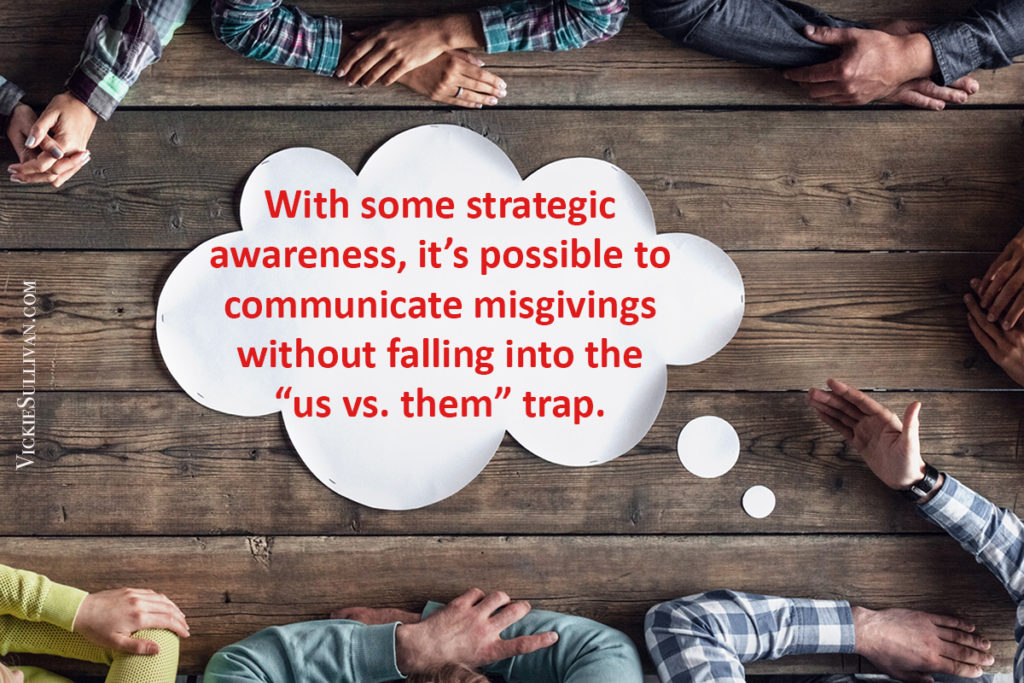Written by: Vickie Sullivan | June 13, 2019
How to Navigate Polarizing Conversations

On the political front, David Gergen is one of my favorite explainers. His street cred is substantial (which is an understatement, considering he has served as a White House adviser to four U.S. presidents – Democrat and Republican), and he works hard to stay above the fray.
So, it was fascinating to watch him struggle to be positive about the state of global democracy during a Q&A session at Harvard University last month. Which begs the question: How do we truthfully discuss what we witness while appearing “fair”?
It’s a delicate balancing act. If you focus too much on the situation’s severity, folks assume you’re on the “other side” and ignore your concerns and predictions. Plus, reporting in with rose-colored glasses undermines your credibility. You can head this reaction off at the pass with these two techniques:
• Go beyond the people. Gergen focused on leadership in a broad way by defining the role to include “setting the moral tone for the culture.” He didn’t mention anyone by name. He also talked about impact and timelines on a variety of fronts. His demeanor conveyed a “here’s what’s happening” angle without blaming any group or person.
Listen: What Not to Do In the Spirit of Fairness
• Include both sides. Gergen pointed out several instances in which both sides are wrong. What was interesting: He noted that they were wrong in the same way. By including both political parties, he not only appeared impartial, but he also showed the similarity in tactics. Again, he appeared above the fray of tribalism.
There are times we thought leaders have grave concerns about what’s happening around us. With some strategic awareness, we can communicate those misgivings without falling into the “us vs. them” trap.
Now Read This:
